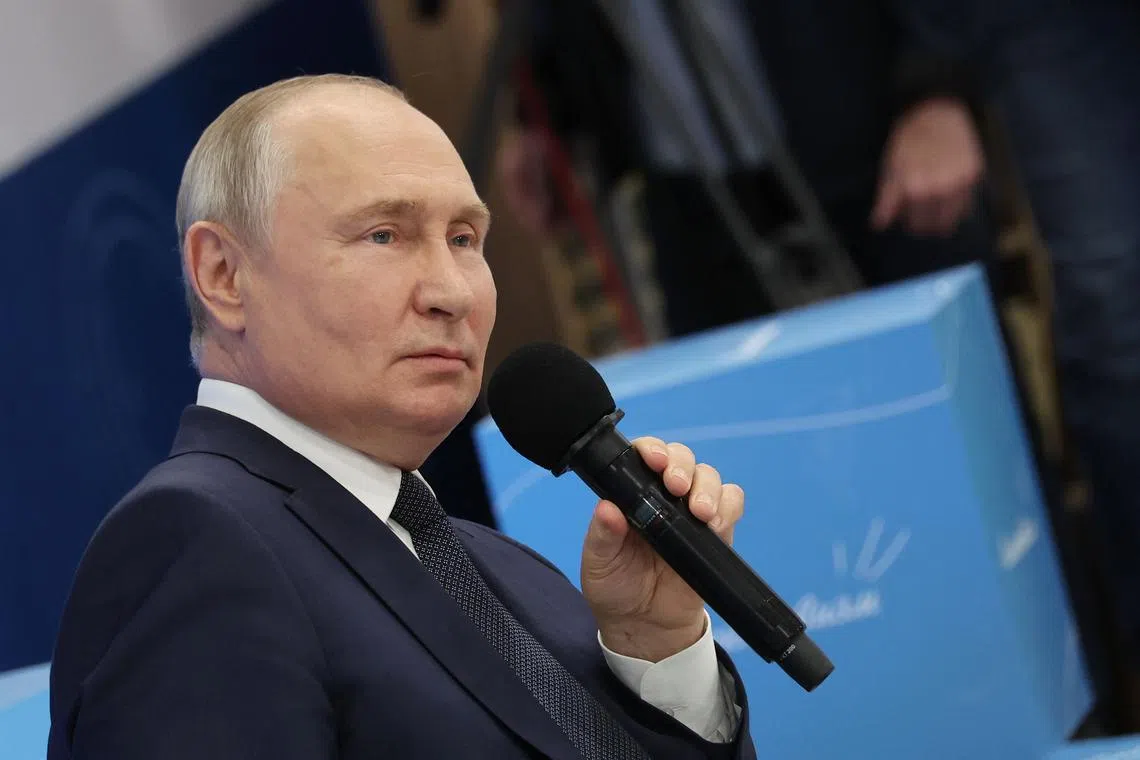What is the Burevestnik missile that Putin says Russia has tested?
Sign up now: Get ST's newsletters delivered to your inbox

President Vladimir Putin first revealed the project in March 2018.
PHOTO: AFP
Follow topic:
LONDON - President Vladimir Putin said on Thursday that Russia has successfully tested the Burevestnik missile.
What is it and why does it matter?
The Burevestnik, whose name translates as “storm petrel”, is a ground-launched, low-flying cruise missile that is not only capable of carrying a nuclear warhead, but is also nuclear-powered. Mr Putin first revealed the project in March 2018.
Its nuclear propulsion gives the missile much longer range than traditional turbojet or turbofan engines that are limited by how much fuel they can carry. The International Institute for Strategic Studies, quoting a specialist Russian military journal in 2021, said the Burevestnik would have a notional range of up to 20,000km, so could be based anywhere in Russia and strike targets in the United States.
The same journal said the notional altitude of the missile was just 50m to 100m, much lower than a conventionally powered cruise missile, which would make it harder for air defence radar to detect.
A 2020 report by the United States Air Force’s National Air and Space Intelligence Centre said that if Russia successfully brought the Burevestnik into service, it would be a “unique weapon with intercontinental-range capability”.
Development of the missile’s nuclear propulsion unit has been a huge technical challenge, involving a number of test failures. In 2019, at least five Russian nuclear specialists were killed in an explosion and release of radiation during an experiment in the White Sea, and US intelligence sources said they suspected it was part of a test of the Burevestnik.
The Nuclear Threat Initiative said the Burevestnik’s nuclear propulsion could enable it to stay aloft for days, if needed. “In operation, the Burevestnik would carry a nuclear warhead (or warheads), circle the globe at low altitude, avoid missile defences and dodge terrain, and drop the warhead(s) at a difficult-to-predict location (or locations),” it said.
The development of Burevestnik and other new Russian strategic systems could complicate negotiations between Moscow and Washington on any replacement for the New Start treaty that limits the number of nuclear weapons each side can deploy. The future of the pact is in question, as Russia suspended its participation in February, and it is due to expire in 2026.
Mr Putin did not say when the latest test took place, but the New York Times reported on Monday that it may have been recent, based on movements of aircraft and vehicles at a Russian base in the Arctic. REUTERS

